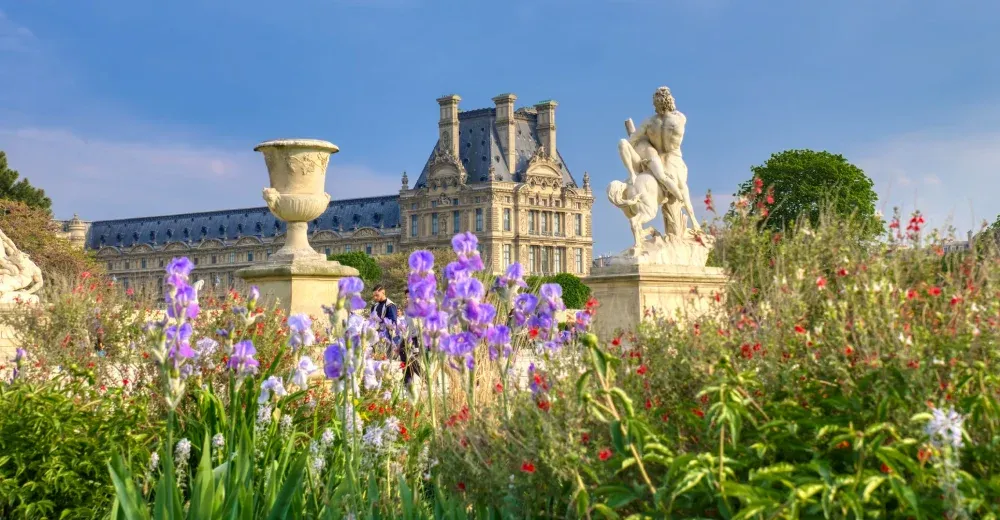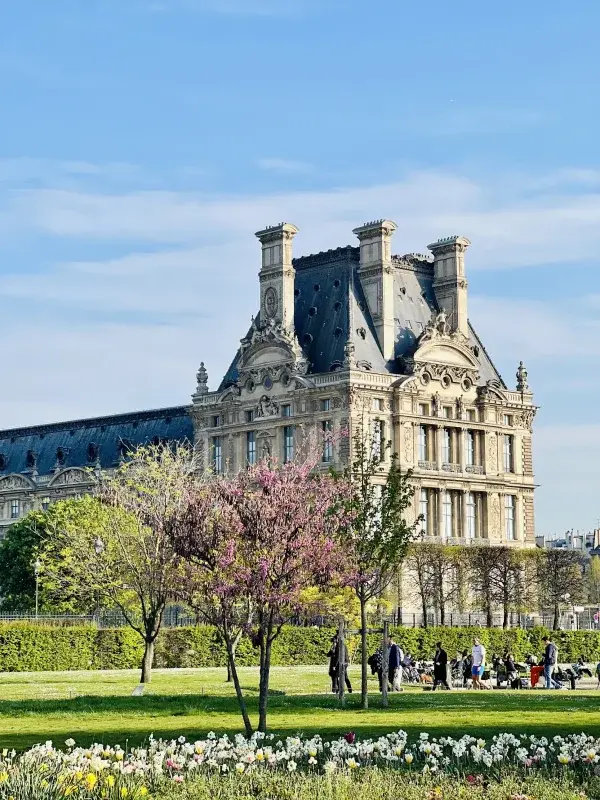The Louvre Palace would not be complete without the Louvre gardens, which are, according to the Louvre itself, “A breath of fresh air in the heart of Paris.”
Between the city’s bustling energy and the heart-stopping wonder of the art within the museum, the Tuileries Garden is an escape into serenity and calm.
Meticulously landscaped into green havens, the Louvre Park is no stranger to visitors who want to pause, reflect, and appreciate nature’s embrace within this cultural epicentre.

Placed adjacent to the Louvre, the Tuileries Garden holds much historical significance, dating back to the 16th century. It was commissioned by Queen Catherine de’ Medici in 1564 and served as a perfect accompaniment to the Palace.
For more than a hundred years (till 1667), it was purely a royal destination, but after the French Revolution, it stood out as a public park open to any visitor and has remained so ever since.
The architect, Bernard de Carnesse, was from Florence and set out to create an Italian Renaissance garden, enclosed with five hundred by three hundred metres and divided into rectangular sections.
However, history notes that this garden still needs to be completed. It was interrupted by a brutal civil war where the Tuileries Garden was pillaged and not set to rights until the return of the new King Henry IV and his Landscaper Claude Mollet.
Countless other renovations and changes to the garden took place under the reign of various kings and rulers. Still, regarding what it contains, this Louvre Park has maintained a natural beauty that remains with it today.
Of the endless elements that make this garden what it is, various unforgettable features must be highlighted:


LOUVRE TICKETS
Skip the long queues and fast-forward your entry to the world’s biggest and most iconic art museum. With Versailles…
LOUVRE PLACES
The Louvre entrance is not just one place or location but many. There are, in fact, four entrances you can utilise to…
LOUVRE INFORMATION
The Salle des Etats is nestled deep within the Louvre, serving as the destination for every visitor, for at its very epicentre lies the most…
